Safety and Regulations
Top 15 Expert Techniques for Trimming Trees
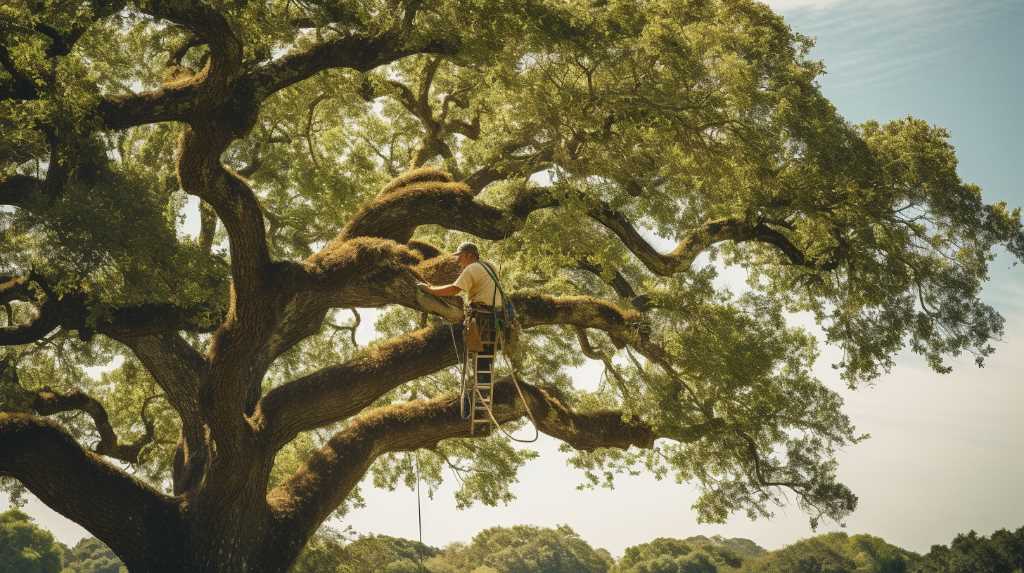

I’ve got a secret to share with you: the top 15 expert techniques for trimming trees. Whether you’re a seasoned arborist or a budding green thumb, these techniques will take your tree trimming skills to the next level.
From proper timing to assessing tree health and safety, we’ll cover it all.
Get ready to learn how to shape hedges, restore trees, and prepare for storms.
Let’s dive in and become tree trimming experts together.
Proper Timing for Tree Trimming
I always trim trees in the early spring to ensure healthy growth throughout the year. Timing is crucial when it comes to tree trimming, as it can greatly impact the tree’s health and overall appearance.
The early spring is an ideal time for this task because it allows the tree to recover and heal before entering its growing season. Trimming during this period promotes new growth and enables the tree to allocate its resources effectively.
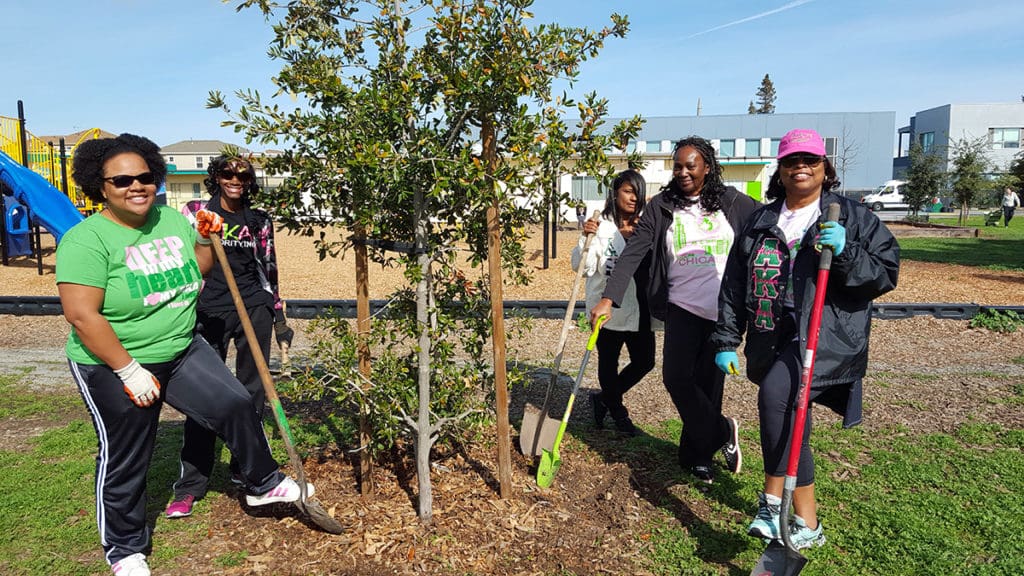

It’s important to trim before the buds start to open to avoid any damage to the tree. Additionally, trimming in the early spring helps to prevent the spread of diseases and pests, as the cold temperatures can hinder their activity.
Assessing Tree Health and Safety
A thorough assessment of the tree’s health and safety is essential before proceeding with any trimming techniques. To ensure the well-being of the tree and the safety of those around it, here are some key factors to consider:
- Visual inspection: Examine the overall appearance of the tree, looking for signs of disease, decay, or structural issues such as cracks or splits.
- Assessing tree roots: Check for any visible root damage or signs of root rot, as healthy roots are crucial for the tree’s stability and nutrient absorption.
- Identifying potential hazards: Look for branches that are dead, weak, or overhanging structures, as they pose a risk of falling and causing damage or injury.
By carefully assessing these aspects, you can make informed decisions about the appropriate trimming techniques to employ.
Understanding Tree Growth Patterns
One important aspect to consider when trimming trees is understanding their unique growth patterns.
By understanding how trees grow, we can make informed decisions about where and how to trim them.
Tree growth patterns vary depending on the species, age, and environmental conditions.
For example, some trees have a central leader, which is a dominant vertical stem that gives the tree its shape.


Others have multiple leaders or branches that compete for dominance.
Understanding these growth patterns helps us determine which branches to remove to maintain a balanced and healthy tree structure.
Additionally, knowing how trees respond to pruning can prevent future issues such as excessive sprouting or weak branch attachments.
Ultimately, understanding tree growth patterns allows us to trim trees in a way that promotes their long-term health and vitality.
Selecting the Right Tools for Trimming
To effectively trim trees, it’s crucial to select the right tools for the job. Having the appropriate tools won’t only make the task easier but also ensure that the tree is trimmed safely and effectively. Here are three types of tools that are essential for tree trimming:
- Pruning shears: These handheld tools are perfect for cutting small branches and twigs. They come in different sizes, so choose one that suits the thickness of the branches you’re working with.
- Loppers: Loppers have long handles and are used to cut thicker branches. They provide extra leverage and make it easier to trim higher branches without the need for a ladder.
- Pruning saw: For larger branches or tree limbs, a pruning saw is necessary. These saws have sharp teeth that can effortlessly cut through thick wood.
Techniques for Crown Thinning
Now, let’s delve into the techniques I use for crown thinning trees.
Crown thinning is a pruning technique used to selectively remove branches within the crown of a tree. The goal is to reduce the density of the foliage while maintaining the overall shape and structure of the tree.
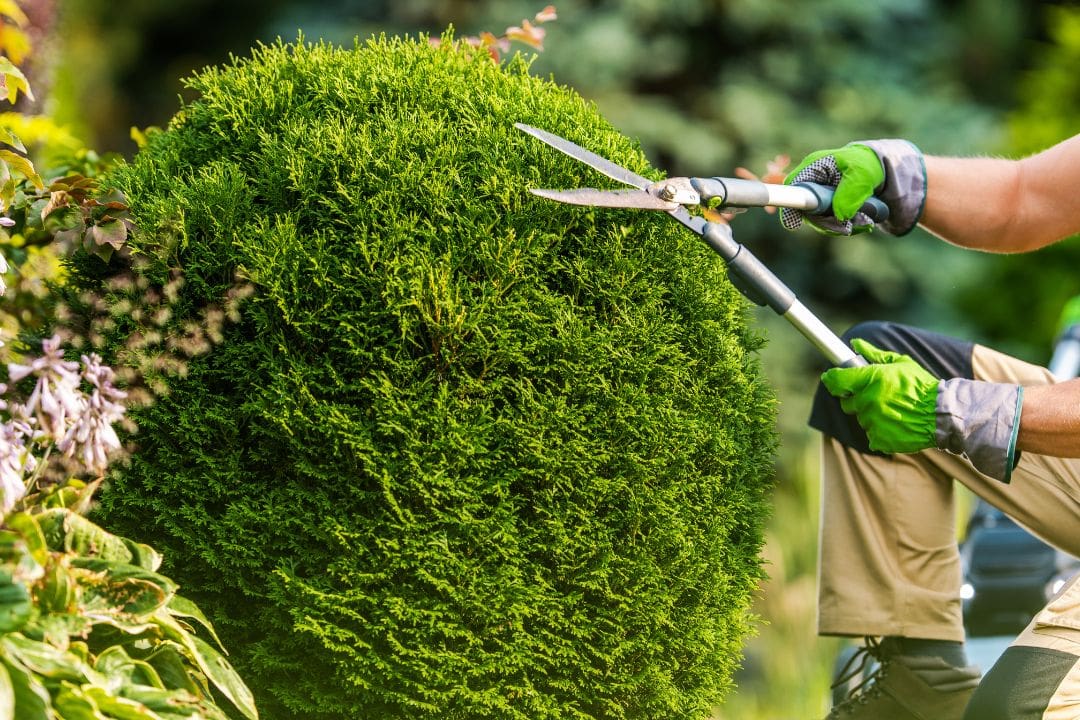

To begin, I carefully assess the tree, identifying branches that are crossing, rubbing, or growing towards the center of the crown. I then strategically remove these branches, ensuring that no more than 30% of the live foliage is removed in a single year.
It’s important to make clean cuts just outside the branch collar, promoting proper healing and preventing the spread of disease.
Crown thinning not only improves the aesthetic appeal of the tree, but also allows for better air circulation and light penetration, promoting overall tree health.
Crown Reduction for Overgrown Trees
I frequently perform crown reduction on overgrown trees, carefully assessing the tree’s structure and selectively removing branches to reduce its size and maintain its health. When it comes to crown reduction, there are a few key techniques that I employ to ensure the best results:
- Crown Evaluation: Before starting the reduction process, I thoroughly evaluate the tree’s crown to determine the best plan of action.
- Selective Branch Removal: I strategically choose which branches to remove, focusing on those that are dead, diseased, or structurally weak.
- Proper Pruning Cuts: I make precise pruning cuts to minimize damage to the tree and promote healthy regrowth.
Pruning to Promote Fruit Production
When promoting fruit production through pruning, I carefully assess the tree’s branches and selectively remove any that are inhibiting optimal fruit growth. This process involves identifying and removing dead, diseased, or damaged branches, as they can hinder the tree’s ability to produce healthy fruit.
Additionally, I pay close attention to the tree’s overall structure and aim to create an open canopy that allows sunlight to penetrate through the branches. This helps to stimulate fruit production and improves air circulation, reducing the risk of fungal diseases.
I also thin out excessive branches to prevent overcrowding, which can lead to competition for nutrients and hinder fruit development.
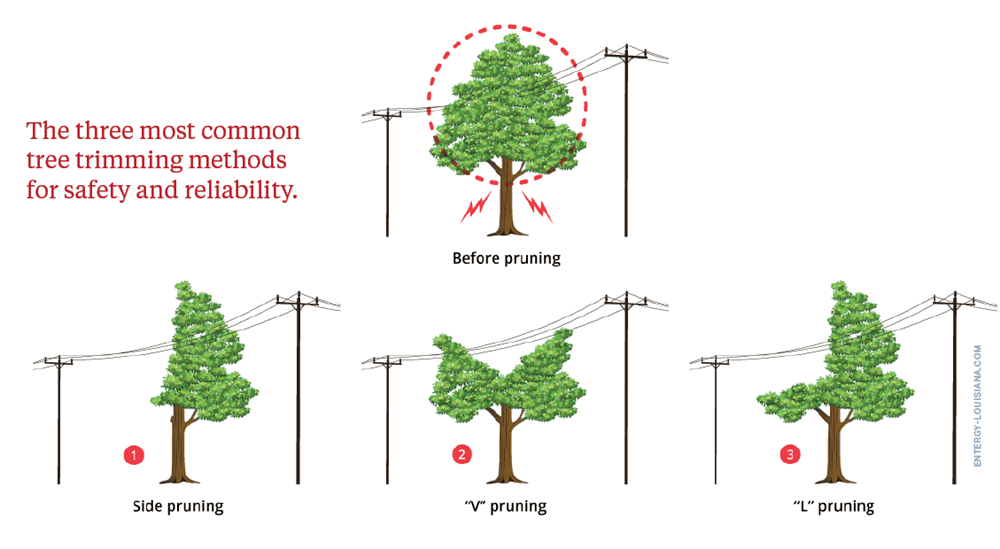

Trimming to Enhance Tree Aesthetics
To further enhance the tree’s aesthetics, I focus on trimming branches to create a balanced and visually pleasing shape. This not only improves the overall appearance of the tree but also promotes its health and longevity.
Here are three key techniques I use to achieve this:
- Crown thinning: This involves selectively removing branches from the crown to reduce density and allow more light and air to penetrate. It helps to maintain a healthy balance between foliage and branches, enhancing the tree’s overall aesthetic appeal.
- Crown raising: By removing lower branches, I create a more defined and open space beneath the tree. This technique is particularly useful in urban areas where clearance for pedestrians and vehicles is necessary.
- Crown shaping: I carefully prune branches to create a symmetrical and visually pleasing shape. This technique is especially important for ornamental trees, enhancing their beauty and making them stand out in any landscape.
Dealing With Dead and Diseased Branches
After addressing the trimming techniques to enhance tree aesthetics, attention must now be turned towards dealing with dead and diseased branches.
It’s important to promptly identify and remove these branches to maintain the health and appearance of the tree. Dead branches can pose safety risks as they’re prone to falling, especially during storms.
To identify dead branches, look for signs such as lack of leaves, brittle or decaying wood, or bark that easily falls off. Diseased branches, on the other hand, may show symptoms like discoloration, cankers, or fungal growth.
To remove dead and diseased branches, use proper pruning techniques such as making clean cuts just outside the branch collar. Always sterilize your pruning tools to prevent the spread of diseases.
Regularly inspecting and pruning dead and diseased branches will contribute to the overall well-being of your trees.
Managing Hazardous Tree Limbs
While managing hazardous tree limbs, it’s crucial to prioritize safety and take proactive measures to prevent potential accidents. Here are three important considerations to keep in mind:
- Regular inspections: Perform routine inspections to identify any hazardous limbs that may pose a risk to people or property. Look for signs of decay, cracks, or weak attachment points. This will allow you to take appropriate action before any accidents occur.
- Proper pruning techniques: When pruning hazardous limbs, it’s important to follow industry-approved techniques. Make clean cuts just outside the branch collar to promote quick healing and reduce the risk of disease or decay. Avoid topping or stub cuts, as they can weaken the limb and lead to further problems.
- Equipment and training: Always use the right equipment and ensure that you and your team are properly trained in safe work practices. This includes wearing appropriate safety gear, such as helmets and protective eyewear, and using tools that are in good working condition.
Tips for Trimming Young Trees
When it comes to trimming young trees, it’s important to use proper pruning techniques to ensure their healthy growth. Timing is crucial, as trimming should be done during the dormant season to minimize stress on the tree.
Proper Pruning Techniques
To properly prune young trees, I follow expert techniques that promote healthy growth and structural integrity. Here are some key tips to ensure your young trees thrive:
- Timing: Pruning should be done during dormancy, typically in late winter or early spring, to minimize stress and maximize regrowth potential.
- Selective Pruning: Identify and remove any dead, damaged, or diseased branches to prevent further spread and promote overall tree health.
- Prune for Structure: Encourage strong branch attachments by selectively removing competing branches and maintaining a central leader. This will help prevent future breakage and ensure a well-balanced tree.
By adhering to these techniques, you can effectively shape and strengthen your young trees, setting them on a path to long-term health and vitality.
Timing for Tree Trimming
I continue to implement expert techniques for trimming young trees. One crucial aspect to consider is the timing for tree trimming. Timing plays a significant role in the health and growth of young trees.
It’s important to trim trees during their dormant period, which is typically in late winter or early spring. During this time, the tree is less likely to experience stress and is better equipped to recover from pruning. Trimming young trees during the dormant season also reduces the risk of disease or insect infestation.
Additionally, it’s important to avoid trimming trees during periods of extreme weather, such as high winds or freezing temperatures.


Promoting Healthy Tree Growth
Implementing expert techniques for trimming young trees involves promoting healthy tree growth. To ensure optimal growth and development, here are three key tips for trimming young trees:
- Prune for structure: Proper pruning during the early years of a tree’s life helps establish a strong and well-balanced structure. Remove any competing or crossing branches to promote a central leader and outward growth.
- Remove dead or damaged branches: Young trees are vulnerable to disease and pests, so it’s crucial to remove any dead or damaged branches. This not only improves the tree’s appearance but also prevents the spread of infection.
- Avoid over-pruning: While pruning is essential, it’s important not to overdo it. Over-pruning can disrupt the tree’s natural growth pattern and weaken its structure. Aim to maintain a balance between removing excess growth and preserving the tree’s overall health.
Pruning for Tree Restoration
When restoring a tree, it’s important to carefully assess its pruning needs. Pruning for tree restoration involves the removal of dead, damaged, or diseased branches to promote the tree’s health and vitality.
It’s crucial to identify and remove any weak or crossing branches that can hinder the tree’s growth and cause potential damage. By pruning selectively, we can improve the tree’s structure and shape, allowing it to better withstand harsh weather conditions.
Additionally, pruning can encourage the growth of new branches and promote air circulation within the canopy, reducing the risk of diseases. It’s essential to use proper pruning techniques to minimize the stress on the tree and ensure its successful restoration.
Regular maintenance pruning can help restore the tree’s natural beauty and contribute to its long-term health and vitality.
Trimming to Improve Airflow and Light Penetration
To improve airflow and light penetration, it’s important to assess the tree’s branches and selectively trim them as needed. Here are some key considerations for achieving optimal airflow and light penetration:
- Prune crowded branches: Removing branches that are growing too close together allows for better air circulation and light penetration. This helps prevent moisture buildup and reduces the risk of disease.
- Thin the canopy: Thinning out the tree’s foliage allows more sunlight to reach the lower branches and the ground below. It also helps improve air movement through the tree, reducing the chance of wind damage.
- Remove dead or diseased branches: Dead or diseased branches not only hinder airflow and light penetration but can also pose a safety risk. Removing them improves the overall health and appearance of the tree.
By implementing these pruning techniques, you can enhance the airflow and light penetration in your trees, promoting their health and vitality.
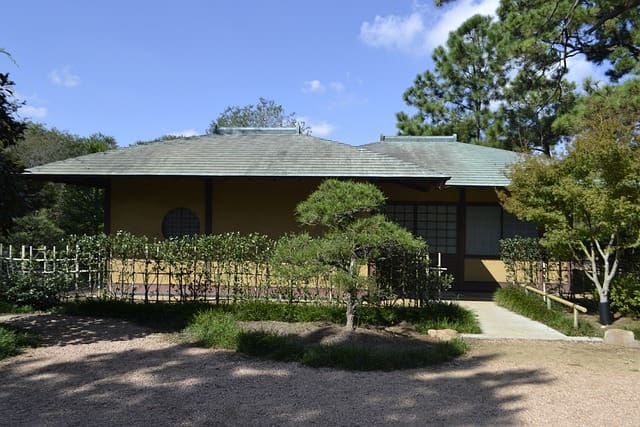

Now, let’s delve into the next section, where we’ll explore techniques for shaping hedges and topiaries.
Techniques for Shaping Hedges and Topiaries
Now, let’s explore some effective techniques for shaping hedges and topiaries, ensuring they maintain their desired form and aesthetic appeal.
To shape hedges, start by using hedge shears to create a straight baseline along the top. Trim the sides vertically, cutting in an upward motion to help the hedge grow thicker at the base. For rounded hedges, create a curved guideline and follow it while trimming. Avoid cutting the hedge too severely, as this can weaken its structure.
When shaping topiaries, begin by carefully pruning the excess growth to reveal the desired shape. Use handheld pruners or shears to trim the foliage, shaping it according to the design. Remember to regularly maintain the shape by trimming any new growth that may compromise the overall form.
By following these techniques, you can create beautifully shaped hedges and topiaries that add charm and elegance to your garden.
Moving on to the next section, let’s discuss tree trimming for storm preparation.
Tree Trimming for Storm Preparation
For storm preparation, I prioritize tree trimming to ensure their stability and minimize potential damage. Here are three key techniques to effectively prepare trees for storms:
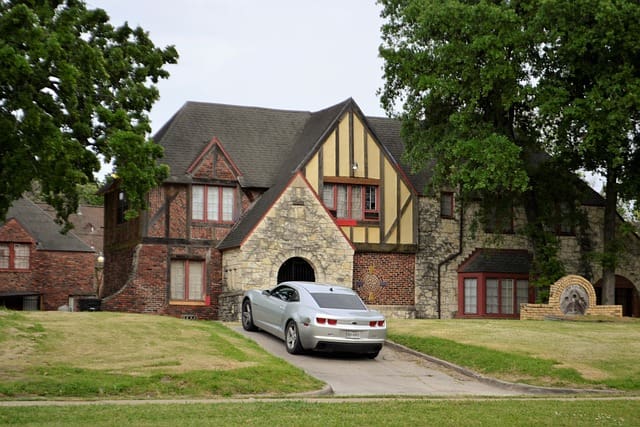

- Crown thinning: By selectively removing branches, this technique reduces wind resistance and allows air to flow through the tree, minimizing the risk of branches breaking off during strong winds.
- Branch spacing: Properly spacing tree branches helps prevent them from rubbing against each other during storms, which could lead to weakened branches or even breakage.
- Deadwood removal: Eliminating dead or dying branches not only enhances the tree’s appearance but also prevents them from becoming hazardous projectiles during storms.


Hello there! I’m Logan Foster, the green-thumbed social media marketer behind the vibrant world of 1800TreeGuy.com. With roots firmly planted in arboriculture, I’ve branched out to help clients cultivate their dream outdoor spaces, one leafy canopy at a time. My knack for nurturing nature is more than a profession—it’s a way of life.
When I’m not talking trees and teaching the art of arboreal care, you can find me cheering on the Bulldogs—my alma mater’s pride and my forever team. My environmental studies there didn’t just teach me about ecosystems; they instilled a lifelong passion for protecting our planet.
Off the clock, I’m an adventurer at heart. Whether it’s trekking the Appalachian trails, pedaling down a mountain path, or crafting guides to share the wonders of the wild, I’m happiest with soil under my nails and the sun on my face. And let’s not forget Yoda, my pug sidekick. He may not have mastered the art of stillness, but his joyful grins are my daily dose of happiness.
I’m all about making connections—between people and the great outdoors and between my clients and their ideal landscape visions. My approach is personal; every tree has a story, and every garden reflects its caretaker.
If you want to green your scene or share in my outdoor escapades, give me a shout on Instagram or Facebook. Let’s cultivate a conversation and grow a community rooted in a love for the lush life.







